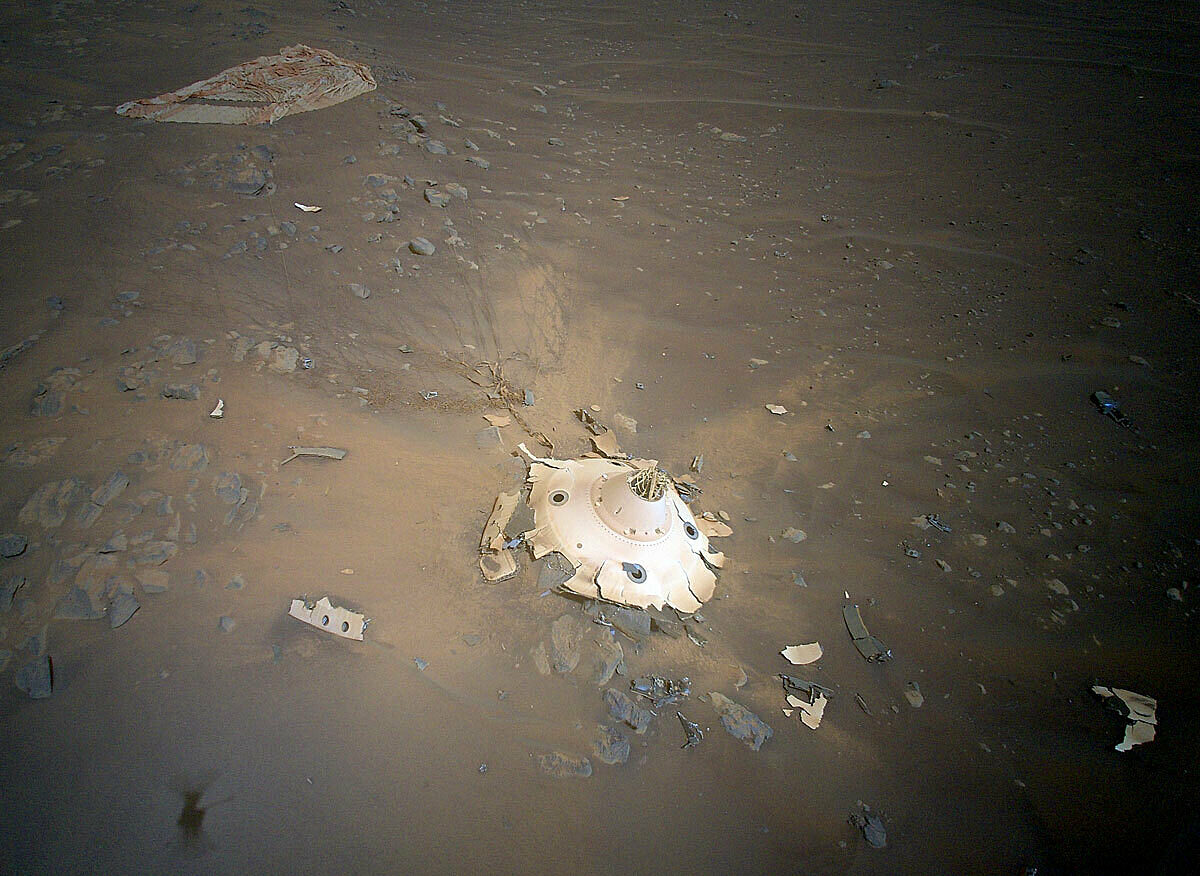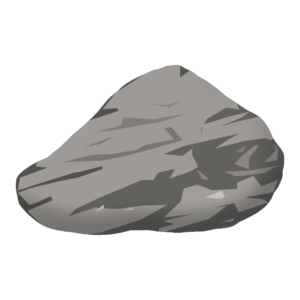The Downlink • May 06, 2022
That’s so metal
Space Snapshot

Scrap metal? Maybe not. Mission engineers for NASA’s Perseverance rover recently got the Ingenuity Mars helicopter to capture images of the landing gear that brought the rover and ’copter to the Martian surface in February 2021. The photo, which shows the parachute in the distance and the demolished backshell in the foreground, can help mission engineers understand the landing system’s performance and improve the design for future missions. Image credit: NASA/JPL-Caltech.
You love space, now take action
This weekly newsletter is your toolkit to learn more about space, share information with your friends and family and take direct action to support exploration. Anyone can subscribe at planetary.org/connect to receive it as a weekly email.
Mission Briefings


Titan is a kind of bizarro Earth, and scientists now think they know why. The Saturnian moon is the only other solar system body with liquid rivers and lakes, although they consist of liquid hydrocarbons like ethane and methane rather than water. Titan also has sand dunes on its surface, made of grains of organic material. New research from Mathieu Lapôtre, an assistant professor of geological sciences at Stanford University, proposes an Earth-like process that explains how these grains retain their granular size despite powerful erosive processes. Pictured: Several views of Titan created from data gathered by NASA's Cassini spacecraft. Image credit: NASA/JPL-Caltech/University of Nantes/University of Arizona.

China is planning an asteroid-deflection mission. The China National Space Administration announced that a mission is under review which would send a spacecraft to a potentially hazardous near-Earth asteroid and impact it, changing its trajectory. The mission, which is aiming for a 2025 launch, comes as part of the broader planetary defense program that China recently initiated.

Psyche has arrived at Kennedy Space Center. This brings the NASA mission closer to its launch, which is currently targeted for August 2022. The asteroid Psyche orbits between Mars and Jupiter and has a metal-rich composition, yielding the opportunity to learn about the formation of planetary cores, which share the same kind of composition.
From The Planetary Society


Get up close and personal with Psyche before it heads for its asteroid namesake. This week’s Planetary Radio brings you to the JPL clean room where host Mat Kaplan visited the probe during its final preparation for launch. You’ll hear conversations with mission leaders including principal investigator Lindy Elkins-Tanton and project manager Henry Stone about the journey ahead of this spacecraft, and what we hope to learn from it. Pictured: An artist’s impression of Psyche at its destination. Image credit: NASA/JPL-Caltech/ASU/SSL/Peter Rubin.
What's Up

It’s worth getting up early to see planets in the predawn sky. Super-bright Venus is close to bright Jupiter, with reddish Mars and yellowish Saturn nearby. Learn more at planetary.org/night-sky.
You’re invited to the Human to Mars Summit

Register for the 2022 Humans to Mars Summit, an Explore Mars event, happening May 17-19, 2022, at George Washington University in Washington D.C. Members receive 10% off using the code PlanetarySocietyMARS.
Humans to Mars is the largest annual conference in the world focused on the achievable and sustainable human exploration of Mars.The Planetary Society’s Mat Kaplan will be there alongside experts and luminaries from the space sector.
Wow of the Week

Some old jewelry went from the junk drawer to the exhibition floor thanks to the creative work of undergraduate student Mary Pyrdol. She created this set of jewelry as part of NASA’s Psyche Inspired program, which engages students from all disciplines to share the Psyche mission with the public through artistic works and then shares the best of those works in a virtual exhibit.
Pyrdol drew inspiration from the mission to the metallic world, using recycled pieces of metal jewelry to handcraft two brooches depicting the asteroid and the spacecraft. “The Asteroid brooch features the two prominent craters mimicked by radial bursts of metal scraps, along with rocky-textured metal plates to mimic the surface of Psyche,” says Pyrdol. “The spacecraft uses rectangular metal scraps with smaller, more detailed beads and rods to mimic the instruments on the actual spacecraft.”
Image credit: Mary Pyrdol.
Share your artwork with us!
We love to feature space artwork in the Downlink. If you create any kind of space-related art, we invite you to send it to us by replying to any Downlink email or writing to [email protected]. Please let us know in your email if you’re a Planetary Society member!


 Explore Worlds
Explore Worlds Find Life
Find Life Defend Earth
Defend Earth


